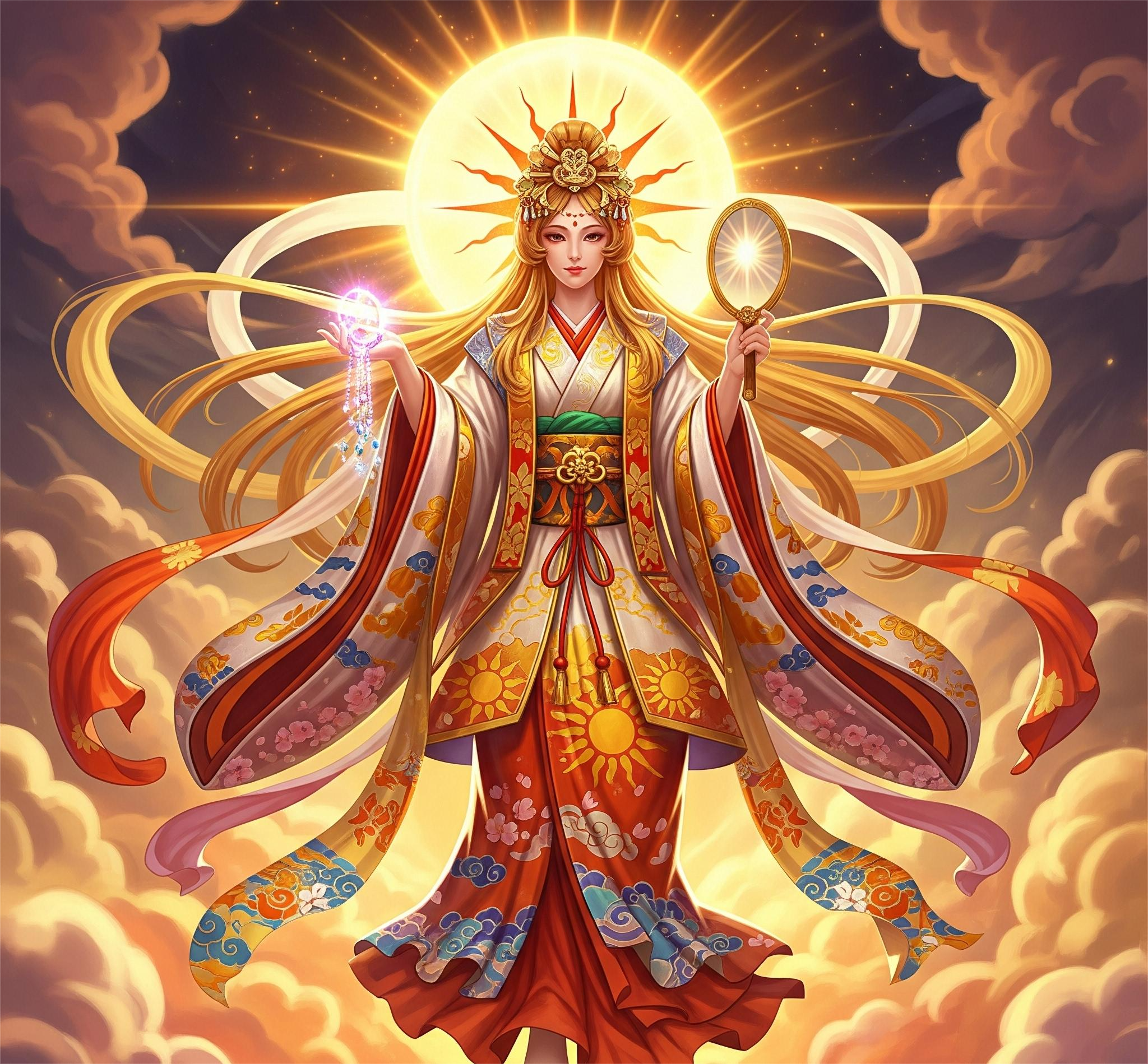In the pantheon of Shinto deities, none shines brighter—literally and symbolically—than Amaterasu Omikami (天照大神), the revered Sun Goddess of Japan. As the celestial embodiment of light, purity, and order, Amaterasu holds a central role in Japan’s native religion and serves as the mythological ancestor of the Japanese imperial family, a connection that continues to influence national identity and tradition to this day.
Who is Amaterasu?
Amaterasu, whose name means “She Who Shines in the Heavens,” is one of the most important kami (deities or spirits) in Shinto, Japan’s indigenous spiritual tradition. She is primarily associated with the sun, agriculture, and the universe’s sustaining forces.
According to the Kojiki (Records of Ancient Matters) and Nihon Shoki (Chronicles of Japan)—Japan’s oldest historical texts compiled in the 8th century—Amaterasu was born from the left eye of the creator god Izanagi during his purification rituals. Her siblings include Susanoo, the storm god, and Tsukuyomi, the moon god.
The Myth of the Cave: Darkness and Restoration
One of the most famous Shinto myths centers on Amaterasu retreating into a cave, plunging the world into darkness. This happened after a violent dispute with her brother Susanoo, whose destructive behavior deeply offended her.
In grief and anger, she sealed herself inside the Amano-Iwato (Heavenly Rock Cave), refusing to emerge. Without her light, chaos and darkness spread across the world. The other gods, desperate to restore balance, devised a plan: they performed a joyous and raucous dance outside the cave to lure her out.
Curious about the noise and laughter, Amaterasu peeked out—only to be drawn fully into the open by the gods, who then sealed the cave shut behind her. Her return brought light and order back to the cosmos, and reaffirmed her role as the life-giving force of nature.
Amaterasu and the Imperial Family
Perhaps the most enduring legacy of Amaterasu is her direct connection to Japan’s emperors. According to tradition, she entrusted her grandson, Ninigi-no-Mikoto, with the task of bringing peace to the earth. Ninigi descended to Japan bearing three sacred treasures—the mirror, sword, and jewel—which symbolize wisdom, valor, and benevolence.
Ninigi’s great-grandson, Emperor Jimmu, is considered the first emperor of Japan, thus beginning a lineage that claims divine descent from Amaterasu herself. This mythological ancestry has long been used to legitimize the emperor’s role as both political leader and spiritual figure.
Even today, the Japanese emperor is regarded as a symbolic descendant of Amaterasu, a role that underscores important Shinto ceremonies and national identity.
The Ise Grand Shrine: Amaterasu’s Sacred Home
The primary site of Amaterasu’s worship is the Ise Grand Shrine (Ise Jingū) in Mie Prefecture, one of the most sacred locations in all of Japan. Believed to have been established over 2,000 years ago, this Shinto shrine is dedicated exclusively to her.
Key features of the shrine include:
The Naikū (Inner Shrine), which houses the sacred mirror—a core symbol of Amaterasu and one of the imperial regalia.
A ritual rebuilding of the shrine every 20 years (Shikinen Sengū), representing renewal, continuity, and the impermanence of life—a unique Shinto tradition.
Access to the inner sanctum is highly restricted, with only the emperor and select priests allowed entry, reinforcing the shrine’s deep ties to imperial authority and purity.
Amaterasu’s Symbolism in Modern Japan
Though Japan’s post-World War II constitution redefined the emperor as a symbolic figure, Amaterasu remains a potent spiritual symbol. Her legacy persists through:
National symbolism: The Japanese flag, featuring the red sun disc (Hinomaru), reflects her identity as the sun goddess.
Cultural identity: Her myths are taught in schools and referenced in festivals and arts.
Imperial rites: Important state rituals, like the Daijōsai (Great Thanksgiving Ceremony), invoke Amaterasu to bless new emperors.







